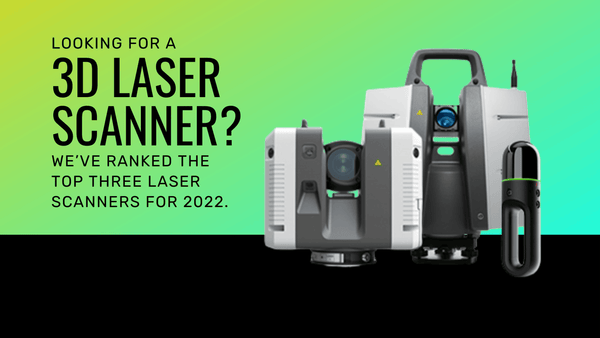How 3D Laser Scanning Technology Can Save the Notre Dame Cathedral
On April 15, 2019 Paris’ Notre Dame cathedral caught fire and burned ferociously for almost 24 hours leaving behind a pile of ash and rubble that once was the cathedral’s 300 foot tall iconic spire. Construction on the cathedral began in 1163 and lasted almost two centuries … 182 years to be exact. The cathedral is culturally, geographically and historically significant and it’s been the location of coronations and the setting for world-renowned novels. It’s survived revolutions and world wars. It houses relics and irreplaceable works of art while its architectural details reign supreme. While the fire in the spring of 2019 isn’t the first time the cathedral’s been damaged, the significance of the destruction weighed heavily on France’s leadership and cultural institutions who knew that there would be no other choice but to restore Notre Dame to its original condition. But how?
An Unlikely Savior
Since 1997, Montreal-based game development studio Ubisoft has cultivated a reputation. It’s the largest studio in the world and has created some of the most iconic games in its more than 20 year history including games from “hit brands” like Tom Clancy’s Splinter Cell, For Honor and Assassin’s Creed. The 2014 installation of the Assassin’s Creed franchise, Assassin’s Creed Unity is a single-player action-adventure video game that follows the main character, Arno Victor Dorian, through Paris during the French Revolution. While the game didn’t earn the best reviews by critics, it has been credited for its artistic and accurate depictions of iconic French landmarks such as the Notre Dame cathedral, the Bastille and Tuileries Palace. When it comes to setting, the game does not disappoint.

Ubisoft’s Caroline Miousse, a level artist, spent nearly two years modeling the cathedral down to each and every lone brick. Miousse worked alongside historians and texture artists all while spending countless hours referencing historical documents and photos to ensure that the game did the cathedral detailed and historical justice. Miousse’s attention to detail will give the cathedral’s restoration team another point of reference ensuring that the cathedral’s interior and spire can be restored with precision. There is no doubt the role that Assassin’s Creed Unity will play in the cathedral’s restoration but one historian’s diligence, meticulous demeanor and passion for technology serves up promise for the cathedral’s future.
Billions of Points and 1 Art Historian
Art historian Andrew Tallon, who passed in 2018, spent time as a child in France while his mother worked on her dissertation. Years later he would be drawn back to The City of Light to embark on a project unlike anything that the world of gothic architecture had ever seen before.
In 2015 Tallon scanned the Notre Dame cathedral using 3D scanning technology. The scanner atop a tripod projected beams of light around the cathedral’s interior measuring the distance from the scanner itself to every nook and cranny of the building’s interior. Each of these measurements would be represented by a colored dot (or data point). From these dots Tallon would, with the assistance of software, create a point cloud (a three-dimensional image). Two decades ago, 3D renderings were almost useless and unmanageable, in 2015 when Tallon scanned the Notre Dame cathedral the technology had surpassed many expectations and the results were quite incredible.

Tallon’s scans and renderings of the cathedral’s interior and exterior as well as detailed panoramic photos taken by Tallon himself will allow skilled artisans and master stonecutters to rebuild the cathedral exactly as it was before the fire. Modern proposals were pitched to the French government to include current day amenities like a rooftop garden, but the French President Emmaual Macron opted to return the iconic structure to its former self. While work won’t commence until 2021, there is no doubt the role that 3D scanning technology will play in the lengthy reconstruction project.

3D Scanning is Preserving Culture Around the Globe
While the Notre Dame cathedral has garnered world-wide notoriety, 3D laser scanning technology is being employed around the world to preserve historic monuments in all shapes and sizes. From the Detroit Life Building in Michigan to the Pittock Mansion in Portland, Oregon small, large and lesser-known historic buildings are being preserved as you read this article.
The Pittock Mansion is an important symbol to Portland’s history. Having faced its near demise in the 1960s and its subsequent restoration soon thereafter, The Pittock Mansion Society wanted to ensure that any potential future threats to the historic house museum could be remedied and that the building could be brought back to its original condition. The French Renaissance-style home was built with local and regional materials featuring curved wooden floors and 23 rooms, including a Turkish smoking room and a library. In steps digital twin technology.
State-of-the-art 3D scanning equipment, the Leica P40 scanner and the BLK360, were brought onsite to the Pittock Mansion to precision scan the 46-room interior and the massive exterior property. The results of the project are quite incredible and with the use of point cloud technology and HDR imaging the historical site is now digitally preserved. In the event that the mansion undergoes damage from natural causes or usual wear and tear, a team of restoration experts and engineers will be able to refer to the mansion’s digital twin for restoration and preservation purposes.
Whether you’re a historical buff like Andrew Tallon or simply a tourist who enjoys taking in all of the sights, 3D scanning technology is something to be appreciated. The technology is allowing for not only restoration but preservation and giving us a much better appreciation and understanding of the people who designed and constructed these buildings in the first place. With the start of construction on the Notre Dame cathedral coming in early 2021, it will be crucial that we watch the role that 3D scanners play in rebuilding one of France’s most beloved historical icons.




